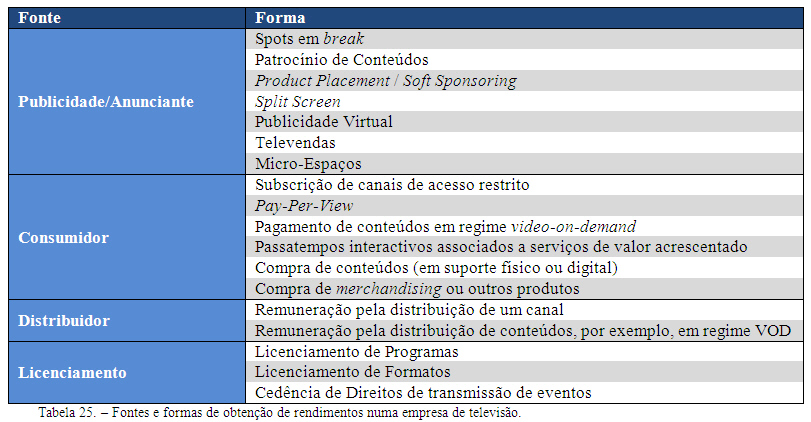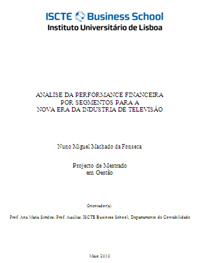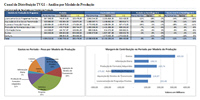 | ||||||||||||||
| ||||||||||||||
|
|
5.4 - Segmented Income Recognition Sources and Methods of Obtaining Income In a television company can summarize the main sources of income to the following:
Summarizing what has been stated in previous chapters, there are several ways to raise revenues: 
The distribution channel may be associated with various sources of income, for example, a subscription channel can have income as the subscriptions paid by consumers and simultaneously broadcast advertising block. Some income may be shared with other entities, for example, the value-added interactive services (SMS, IVR or other) the amount paid by the consumer will be shared between the TV company and the telecommunications operator. The same may happen in other situations, such as VOD services paid where income may be shared with the content distributor. Despite the sources of income are presented the most common for a television company, there may be others, such as services from third parties, allowances, reimbursements or other state entities, among others. In a television company to the public share of income originating in the state will certainly be high if not the sole or major source of income. Recognition of Income segment Programs Income directly related to a program should be recognized with the distribution thereof. In the case of advertising, this rule should apply to breaks in the middle of the program or other forms of advertising (sponsorship, split-screen, product placement, among others). In the linear distribution are usually advertising slots between two programs. The proposed allocation of these proceeds goes towards the distribution of income between the two programs. Much of the hearing of an advertising block after a program it should be the program that preceded it, however, there will certainly viewers awaiting the start of the program that follows. You can not properly assess the proportion of the audience falls into in each situation and can anticipate that the behavior will vary depending on the programs concerned. Thus, the option is the solution which presents itself as the most balanced. Recognition of Income in the segment timeslot Like the solution proposed for the expenses, revenues should be recognized in the timeslot in which they were distributed - in the case of spots - or the timeslot in which distribution was made of the contents of which are associated in the case of sponsorships or other forms of non-spot advertising. Non-spot revenues associated with programs such as sponsorship or product-placement, should follow the same rule proposed allocation for the programs, ie, proportional allocation according to the time the program delivered in each timeslot. Recognition of Income Distribution Channel segment The income should be recognized in the channel through which they were generated, whether or not integrated into content. |
|
||||||||||||
nunofonseca.com - All rights reserved.


